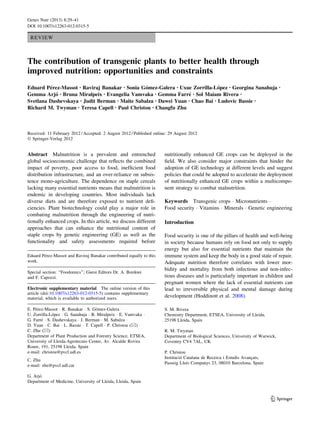This document summarizes strategies to enhance the nutritional content of staple crops through genetic engineering. It discusses approaches to increase levels of various vitamins and minerals in crops, including vitamin A, C, B9, and E. Genetic engineering can introduce genes to modulate plant metabolism and increase the flux through biosynthetic pathways of these nutrients. Some successful examples that have generated nutritionally enhanced crops through genetic engineering are mentioned, such as "Golden Rice" with high levels of vitamin A, and multivitamin maize with increased levels of vitamin A, C, and folate. The document also notes the potential of genetic engineering to help combat malnutrition globally by providing more nutritious staple crops.












